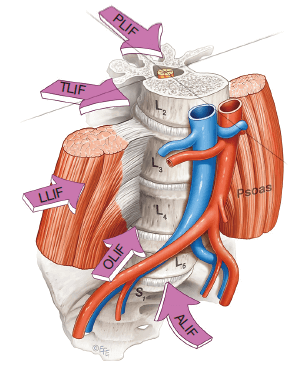Anterior Vs Posterior Fusion Procedures: Spine Surgery
The anterior/posterior lumbar fusion procedure is usually done for patients with a high degree of spinal instability. The difference between an anterior and posterior lumbar fusion is how the spine is accessed.


- Anterior (ALIF),
- Lateral or extreme lateral interbody fusion (LLIF or XLIF),
- Oblique lumbar interbody fusion/anterior to psoas (OLIF/ATP),
- Transforaminal (TLIF or MI-TLIF)
- Posterior (PLIF)
TLIF & PLIF can be done through open procedures or minimally invasive.
Tubular minimally invasive fusion procedures are the best available option present, as they have a small scar, muscle splitting incision so there is no trauma to the muscle fibres, less blood loss, early mobilisation and shorter hospital stay.
ALIF, XLIF, OLIF these are the anterior procedures in which the abdominal incision is given, the abdominal contents are mobilised sideways to reach the spine, then the psoas muscle is dissected and procedure is accomplished. It is not a minimally invasive procedure. The incisions used here are quiet long, and often require pedicle screw and rod fixation, for which we have to again go through the back muscles. So, we have to use two different incisions. Other drawback includes
- Increased chances of infection and blood clots
- Readmission rate is high
- Cost is higher
Dr. Vishal Bhasme is trained spine surgeon in Pune providing comprehensive back care for patients with complex spine disorders.